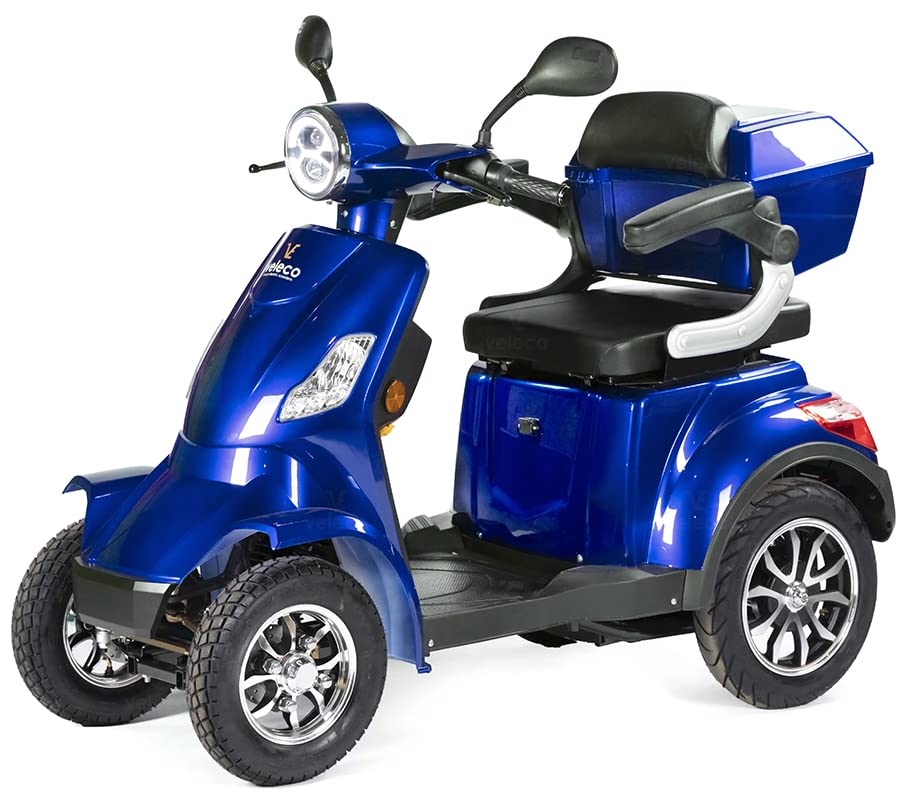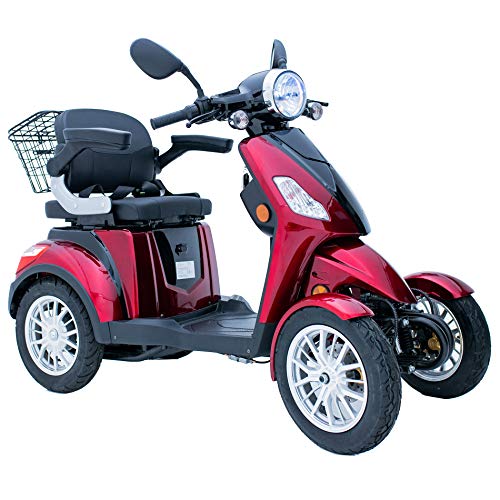
Mobility Scooter For People With Limited Mobility

You can use a mobility scooter if you have difficulty getting around. You can pick from a wide range of sizes and speeds, based on how you plan to use it.
Some insurance policies, like Medicare and Medicaid provide coverage for mobility scooters. These policies may also be available to those who are receiving the social security supplemental payment.
Mobility Scooters
A mobility scooter can be a great tool to help seniors and those with limited mobility. It allows them to go places they couldn't before, and it gives them a sense of independence. Mobility scooters are also made with efficiency and comfort in mind. They are constructed with top-quality components and materials to give the best user experience.
The most reliable mobility scooters are simple to navigate even on rough surfaces. They come with an ergonomic cushioned swivel chair and an adjustable backrest. They can easily disassemble into manageable pieces for transportation. They have a long battery life and the controls are easy to use. They also have a lightweight weight, and a majority of them have the freewheel mode.
The majority of mobility scooters are covered by Medicare or Medicaid depending on the user's situation. Medicare covers scooters as durable medical devices, but you must have a doctor's prescription and a letter that explains how the device can assist you perform daily tasks. Medicaid coverage varies from state to state. You can dial the Medicare card number to learn more about the coverage options available to you.
If you plan to transport a scooter inside an automobile or van, you may require a ramp or lift. The spec sheet usually the weight of the heaviest product so you can compare it with the load capacity of your vehicle. Many mobility scooters designed for travel are designed to be broken down into smaller parts and folded to make them more convenient to carry in your vehicle. These models are more compact and less expensive than other scooters. Some come with a carrying case for added convenience. Some models also come with LED lights on the deck and front to ensure safety, as well as an electric horn.
Medicare
A mobility scooter is an ideal option for those who require help getting around, but don't need the most advanced features or faster speeds of a power chair. It is also an excellent alternative for those with limited mobility in their arms or shoulders and is easier to navigate than most manual wheelchairs. However, it is important to note that Medicare doesn't cover these types of devices, and you must pay for them out of your pocket unless you have another insurance coverage.
There are many different scooter models available. However, they all operate in a similar way. Scooters consist of four fundamental components that include an steering tiller (or handle) as well as a battery, a motor, and wheels. The steering tiller controls the direction of travel, while the motor and wheel are used to move forward and backward. The battery powers the scooter, and some batteries also provide a light to improve visibility.
Scooters are cheaper than wheelchairs and offer more customization options. They are also more maneuverable on uneven surfaces than power wheelchairs and can be operated in places wheelchairs can't. They are also less stigmatizing to disabled people, and a lot of users have found that they are more comfortable to travel long distances.
Based on the condition, scooters can be used on sidewalks and other pedestrian areas if they are equipped with proper safety equipment. It is important to be aware of your surroundings and not restrict pedestrians. Additionally it is recommended you wear a helmet and use reflective materials to ensure your safety. Also, you should not operate your scooter on a road unless it is permitted.
Medicaid
A
mobility scooter usa scooter is a vehicle powered by electricity that has an elevated seat, two rear wheels, as well as a flat area for feet. The handlebar in the front can be used to steer a single or two steerable wheels. Certain models can be driven on sidewalks while others are capable of traveling over roads or other types paths. Mobility scooters can be an excellent option for those who are unable to walk long distances, but still wish to remain active. They are also less expensive than powered wheelchairs. It is important to remember that a scooter may not be the ideal choice for all. Some seniors are able to walk on their own, so in that case it is best to stick with walking aids, or a non-motorized device.
Medicare does not pay for a scooter. However, you could apply to Medicaid for the money. You must be unable to walk for more than 200 feet, and you must have medical conditions that require a scooter in order to be eligible. You must also meet income requirements and program rules.
Depending on where you live, there may be different laws regarding the use of mobility scooters. In North Dakota, for example, scooters are classified under the category of personal assistive devices. This means they are not considered to be vehicles and do not require registration or insurance. You must still follow all traffic laws if you are operating a scooter in public spaces. You must obey all traffic signals, and use crosswalks, if they are they are available. Also, you must adhere to the speed limit within a reasonable range in order to ensure the safety and security of pedestrians as well as other scooter users.
Insurance
Although many people with
branded mobility scooters issues aren't covered by insurance, those who are covered can often get help paying for the purchase of a scooter. Certain insurance plans offered by private insurers as well as Medicare and Medicaid will pay for a mobility scooter. The eligibility requirements for these kinds of insurance plans can differ depending on the state. Tricare for instance will cover a portion of the cost for an electric scooter for certain veterans.
Most states have laws that allow individuals to operate scooters legally on sidewalks as well as other pedestrian paths. Some states also require that users adhere to traffic laws and use signals to turn or stop. Additionally, it is recommended that scooter users wear helmets and attend safety classes to ensure their safety as well as the safety of those around them.
In some cases, a scooter can be used on roads with speed limits as high as 25 mph. It is important to keep in mind that a scooter should be used on a road with a valid operator's license and insurance. Additionally, the vehicle must be equipped with working headlights, taillights, and horns to ensure the safety of other drivers as well as pedestrians.
Certain people might be eligible for Medicare coverage by having their doctor issue an order and a letter that deems the scooter medically necessary. They may then be eligible for Medicare Part B which covers 80% the cost of the scooter. If a person isn't able to purchase a scooter outright they can consider financing options or purchasing one through a reseller. It is also advisable to consider buying mobility scooters that come with warranty. It will cover the cost of repairs and replacement parts in the event that something goes wrong.
Financing
The purchase of a mobility scooter could be expensive however there are financing options to make it more affordable. These financing options are available through third-party lenders, medical equipment retailers, and even dealerships. It is essential to know the different financing options and how they work prior to applying. This way, you will find the best option for your needs.
Non-profit organizations are a preferred source of financing for mobility
value-for-money scooters. They offer low-interest loans that make the purchase more affordable to people with limited budgets.